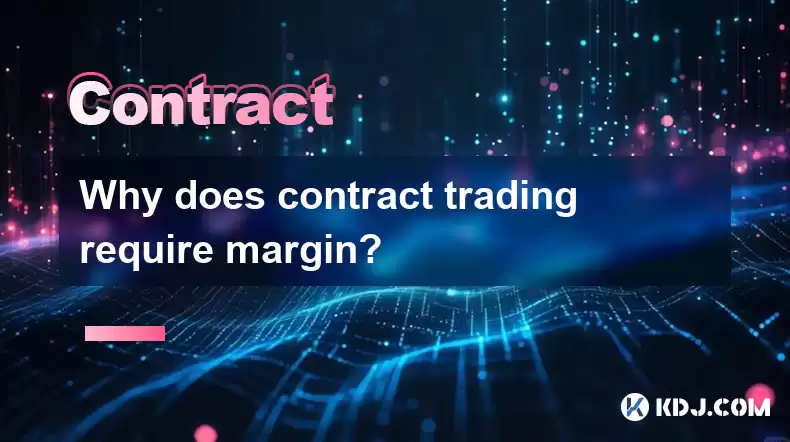-
 Bitcoin
Bitcoin $116700
0.24% -
 Ethereum
Ethereum $3973
4.34% -
 XRP
XRP $3.283
7.68% -
 Tether USDt
Tether USDt $1.000
0.01% -
 BNB
BNB $789.8
2.27% -
 Solana
Solana $176.2
3.31% -
 USDC
USDC $0.9999
0.00% -
 Dogecoin
Dogecoin $0.2238
5.14% -
 TRON
TRON $0.3389
-0.51% -
 Cardano
Cardano $0.7907
4.03% -
 Stellar
Stellar $0.4527
10.02% -
 Hyperliquid
Hyperliquid $41.07
4.27% -
 Sui
Sui $3.794
1.77% -
 Chainlink
Chainlink $19.49
10.40% -
 Bitcoin Cash
Bitcoin Cash $580.9
0.74% -
 Hedera
Hedera $0.2617
4.32% -
 Avalanche
Avalanche $23.41
3.67% -
 Ethena USDe
Ethena USDe $1.001
-0.03% -
 Litecoin
Litecoin $122.4
1.38% -
 Toncoin
Toncoin $3.364
1.49% -
 UNUS SED LEO
UNUS SED LEO $8.988
0.37% -
 Shiba Inu
Shiba Inu $0.00001295
2.82% -
 Uniswap
Uniswap $10.62
5.75% -
 Polkadot
Polkadot $3.922
4.46% -
 Dai
Dai $1.000
0.01% -
 Bitget Token
Bitget Token $4.494
2.15% -
 Monero
Monero $268.0
-1.30% -
 Cronos
Cronos $0.1523
3.68% -
 Pepe
Pepe $0.00001127
4.43% -
 Aave
Aave $285.4
4.85%
Why does contract trading require margin?
Margin in crypto contract trading allows leverage, amplifying potential profits but also increasing risk; traders must manage it carefully to avoid liquidation.
Apr 08, 2025 at 02:07 pm

Introduction to Contract Trading
Contract trading in the cryptocurrency market refers to the practice of trading futures or options contracts. These contracts allow traders to speculate on the future price of a cryptocurrency without actually owning the underlying asset. One of the key components of contract trading is the use of margin. Margin is essentially a loan provided by the exchange to the trader, which enables them to take larger positions than they could with their own capital alone. This article will explore why margin is necessary for contract trading and how it functions within the crypto ecosystem.
The Role of Margin in Contract Trading
Margin plays a crucial role in contract trading by allowing traders to leverage their positions. Leverage is the ability to control a large position with a relatively small amount of capital. For example, with a 10x leverage, a trader can control a position worth $10,000 with just $1,000 of their own money. The remaining $9,000 is provided by the exchange as margin. This ability to leverage positions is what makes contract trading attractive to many traders, as it can amplify potential profits.
How Margin Works in Contract Trading
When a trader decides to enter a contract trade, they must first deposit an initial amount of capital into their trading account. This initial deposit is known as the initial margin. The initial margin acts as a security deposit, ensuring that the trader has enough funds to cover potential losses. Once the initial margin is deposited, the trader can then use leverage to enter into a contract position.
- Open a trading account on a platform that supports contract trading.
- Deposit funds into the account to meet the initial margin requirement.
- Select the contract you wish to trade and specify the amount of leverage you want to use.
- Execute the trade and monitor your position closely.
The Importance of Maintenance Margin
In addition to the initial margin, traders must also be aware of the maintenance margin. The maintenance margin is a lower threshold that the account balance must not fall below once a position is open. If the account balance drops below the maintenance margin due to market movements, the trader will receive a margin call. A margin call requires the trader to either deposit more funds into their account or close part of their position to bring the account balance back above the maintenance margin level.
Risks Associated with Margin in Contract Trading
While margin can amplify potential profits, it also increases the risk of significant losses. Because traders are using borrowed funds, any adverse movement in the market can lead to rapid depletion of their account balance. If the market moves against the trader's position and the account balance falls below the maintenance margin, the exchange may automatically liquidate the position to cover the losses. This is known as a liquidation.
Managing Margin and Risk
To manage the risks associated with margin in contract trading, traders should employ several strategies:
- Use stop-loss orders to automatically close positions if the market moves against them beyond a certain point.
- Monitor positions closely and be prepared to add more funds if a margin call occurs.
- Diversify trading strategies to spread risk across different types of contracts and leverage levels.
- Understand the market and the specific cryptocurrency being traded to make informed decisions.
Conclusion
Margin is a fundamental aspect of contract trading in the cryptocurrency market. It allows traders to leverage their positions, potentially increasing their profits, but it also comes with significant risks. Understanding how margin works, including the concepts of initial and maintenance margin, is crucial for anyone looking to engage in contract trading. By managing margin effectively and employing risk management strategies, traders can navigate the volatile world of crypto contract trading more safely.
Frequently Asked Questions
Q: Can I trade contracts without using margin?
A: While it is technically possible to trade contracts without using margin, doing so would limit the trader to using only their own capital, which would significantly reduce the potential for leverage and amplified returns. Most traders use margin to take advantage of the leverage it provides.
Q: What happens if I cannot meet a margin call?
A: If you cannot meet a margin call, the exchange will typically liquidate your position to cover the losses. This means that your position will be closed automatically, and you may incur significant losses.
Q: How can I calculate the amount of margin I need for a trade?
A: The amount of margin required for a trade depends on the leverage you choose and the value of the contract. The formula to calculate the initial margin is: Initial Margin = (Contract Value / Leverage). For example, if you want to trade a $10,000 contract with 10x leverage, the initial margin required would be $1,000.
Q: Are there different types of margin in contract trading?
A: Yes, there are different types of margin in contract trading. The two main types are initial margin, which is required to open a position, and maintenance margin, which is the minimum amount that must be maintained in the account to keep the position open. Some exchanges may also offer cross margin and isolated margin, which allow for different ways of managing risk across multiple positions.
Disclaimer:info@kdj.com
The information provided is not trading advice. kdj.com does not assume any responsibility for any investments made based on the information provided in this article. Cryptocurrencies are highly volatile and it is highly recommended that you invest with caution after thorough research!
If you believe that the content used on this website infringes your copyright, please contact us immediately (info@kdj.com) and we will delete it promptly.
- Roman Storm, Funding Effort, and the Looming Defense Retrial: A New York Minute on the Tornado Cash Case
- 2025-08-09 02:50:14
- Crypto's Wild Ride: XRP, Dogecoin, and the Altcoin Surge You Can't Ignore
- 2025-08-09 02:50:14
- Elon Musk, Bitcoin, and the Enduring Power of Approval: A Crypto Love Story?
- 2025-08-09 03:50:15
- Ruvi AI: The Next Big Thing After Ripple on CoinMarketCap?
- 2025-08-09 03:50:15
- Floki Price Surges: Elliott Wave and Fibonacci Setups Point to Potential Gains!
- 2025-08-09 02:30:16
- Pepe Price, RTX (Remittix?) & the $10K ETH Dream: NYC Crypto Chatter
- 2025-08-09 02:30:16
Related knowledge

What is the difference between realized and unrealized PNL on KuCoin?
Aug 09,2025 at 01:49am
Understanding Realized and Unrealized PNL on KuCoinWhen trading on KuCoin, especially in futures and perpetual contracts, understanding the distinctio...

How does KuCoin Futures compare against Binance Futures in terms of features?
Aug 09,2025 at 03:22am
Trading Interface and User ExperienceThe trading interface is a critical component when comparing KuCoin Futures and Binance Futures, as it directly i...

What is the distinction between mark price and last price on KuCoin?
Aug 08,2025 at 01:58pm
Understanding the Basics of Price in Cryptocurrency TradingIn cryptocurrency exchanges like KuCoin, two key price indicators frequently appear on trad...

What are the specific maker and taker fees on KuCoin Futures?
Aug 08,2025 at 08:28am
Understanding Maker and Taker Fees on KuCoin FuturesWhen trading on KuCoin Futures, users encounter two primary types of fees: maker fees and taker fe...

Can you explain the difference between cross margin and isolated margin on KuCoin?
Aug 09,2025 at 02:57am
Understanding Margin Trading on KuCoinMargin trading on KuCoin allows traders to borrow funds to increase their trading position beyond their actual c...

How can I open a long position on KuCoin Futures?
Aug 09,2025 at 02:07am
Understanding KuCoin Futures and Long PositionsOpening a long position on KuCoin Futures means you are speculating that the price of a cryptocurrency ...

What is the difference between realized and unrealized PNL on KuCoin?
Aug 09,2025 at 01:49am
Understanding Realized and Unrealized PNL on KuCoinWhen trading on KuCoin, especially in futures and perpetual contracts, understanding the distinctio...

How does KuCoin Futures compare against Binance Futures in terms of features?
Aug 09,2025 at 03:22am
Trading Interface and User ExperienceThe trading interface is a critical component when comparing KuCoin Futures and Binance Futures, as it directly i...

What is the distinction between mark price and last price on KuCoin?
Aug 08,2025 at 01:58pm
Understanding the Basics of Price in Cryptocurrency TradingIn cryptocurrency exchanges like KuCoin, two key price indicators frequently appear on trad...

What are the specific maker and taker fees on KuCoin Futures?
Aug 08,2025 at 08:28am
Understanding Maker and Taker Fees on KuCoin FuturesWhen trading on KuCoin Futures, users encounter two primary types of fees: maker fees and taker fe...

Can you explain the difference between cross margin and isolated margin on KuCoin?
Aug 09,2025 at 02:57am
Understanding Margin Trading on KuCoinMargin trading on KuCoin allows traders to borrow funds to increase their trading position beyond their actual c...

How can I open a long position on KuCoin Futures?
Aug 09,2025 at 02:07am
Understanding KuCoin Futures and Long PositionsOpening a long position on KuCoin Futures means you are speculating that the price of a cryptocurrency ...
See all articles

























































































